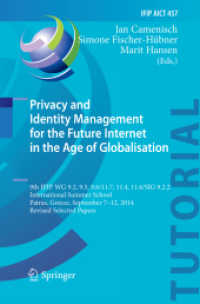- ホーム
- > 洋書
- > 英文書
- > Science / Mathematics
Full Description
Introduced originally as a model of magnetism of transition met als, the Hubbard model has seen a spectacular recent renaissance in connection with possible applications to high-Tc superconductivity, for which particular emphasis has been placed on the phase diagram of the two-dimensional variant of the model.







